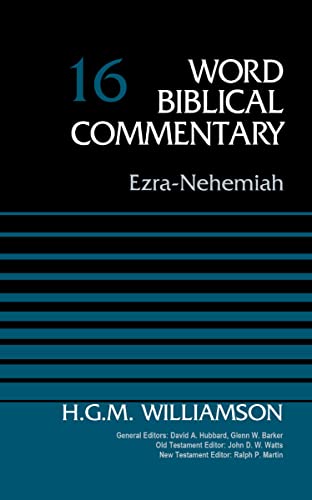This little book packs a great deal of information and discussion into its four chapters, admirably fulfilling its task of steering the student through the busy traffic of scholarly books and articles on this pair of writings. This it does in mainly three ways: by the author’s own source criticism; by his summaries and critiques of leading opinions as he goes through the material; and by his provision of reading lists at frequent intervals in his text. This last feature is particularly useful, since it is all too easy to overlook contributions to the debate in articles scattered through learned journals.
The debate itself is handled with considerable clarity, fairness and good sense. Even what is called the ‘traditional’ view, or a ‘flat’ reading of the sacred text, is given a brief hearing from time to time, although it is perhaps significant that a conservative answer to a problem may be characterized as explaining it ‘away’.
On the well-known historical issues the author steers (in his own words) ‘a middle course’ (p. 69) between the ‘ultra-conservative’ who has no quarrel with the biblical story as given and the radical critic who ‘will be sceptical about any historical reconstruction’. On the rebuilding of the temple, his position is that no start was made until the arrival of Haggai and Zechariah in Ezr. 5, despite the apparent testimony of Ezr. 3:8–4:5 to the contrary. The latter is explained (away?) as a ‘highly stylized presentation’ (p. 53) composed by the editor not as a precursor in time to chs. 5 and 6 but as a complement to them, designed mainly to ‘draw attention to parallels with the building of the first temple’. A list of such parallels with texts in 1 and 2 Chr. is offered; the reader would be wise to look them up and draw his own conclusions. He could also ask himself how a reader without the present guide could be expected to reach so well-hidden an interpretation of what happened ‘in the second year of their coming to … Jerusalem’ (Ezr. 3:8). ‘The conservative view’, we are told, ‘is merely an assumption based upon the fact that Ezr. 2 follows Ezr. 1’ (p. 52)—and, we should add, that Ezr. 3 follows Ezr. 2! Clearly, if the sequence of chapters is so misleading, either the ancient or the modern writer is being over-subtle at this point, and we must make our choice between them.
On the dates of the two reformers, Ezra (458) preceded Nehemiah (445); but the public reading of the Law described in Neh. 8 should be moved back to the book of Ezra, between chs. 8 and 9, 12 or 13 years before Nehemiah’s arrival. (His presence in the text of Neh. 8:9 is simply dismissed in a parenthesis, p. 39—a revealing, if all too familiar, attitude to an inconvenient datum. Prudently, Dr Williamson offers no argument at this point, since he is too good a Hebraist to suppose, with some commentators, that the singular verb in this verse, preceding rather than following its plurality of subjects, is a solecism.) It is also surprising to find so shrewd a writer accepting the old assumption that Ezra’s public reading of the Law must have been his first rather than his climactic presentation of it. Not only is it far from self-evident that his teaching programme must start with a great rally or not at all (a hangover from the theory that he had come to Jerusalem to unveil a new law), but there is textual evidence in the canonical books as we have them to refute this assumption. In less than five months from Ezra’s arrival, the leading citizens were confessing to him their conviction of sin, and expressing it in the archaic language of the torah (Ezr. 9:1–2). Indeed, to anyone who is not wedded to the technique of instant mass-persuasion, the notion of a twelve-year teaching ministry, crowned rather than commenced by a great assembly at an auspicious moment, has everything in its favour—besides calling for no mutilation of the text.
The source criticism in this guide is closely argued, but suffers from the usual tendency of this discipline to press its points too far, especially in assuming that an editor’s silence at a given point must be due to that of his source, rather than to his judgment of what he needs to include. Gaps in the narrative are thus invitations to rearrange events to yield a tighter scheme; and these speculations soon turn into certainties which outbid the claims of the canonical text.
Happily, however, the final chapter, entitled ‘Theology’, puts the books together again, to study the teaching they are intended to convey through the form in which we have them—although the author readily admits that his critical analysis leaves its inevitable mark on his synthesis. (For this is redaction criticism, not a retreat into so-called ‘ultra-conservatism’.) Among his special emphases is his evaluation of Ezra’s lasting contribution to Israel in demonstrating how the ancient Law could be applied to the changing circumstances of the nation throughout history.
To sum up: this writer, while he takes regrettable liberties with the sacred text, always intends his criticisms to be constructive, and certainly gives a first-class survey of the main works of scholarship in this much-debated area. There could hardly be a clearer or a more judicious discussion of these complex conjectures; and the student, from beginner to researcher, will find here an expert informant and a source of up-to-date advice on the literature to seek out.
Derek Kidner
Cambridge







